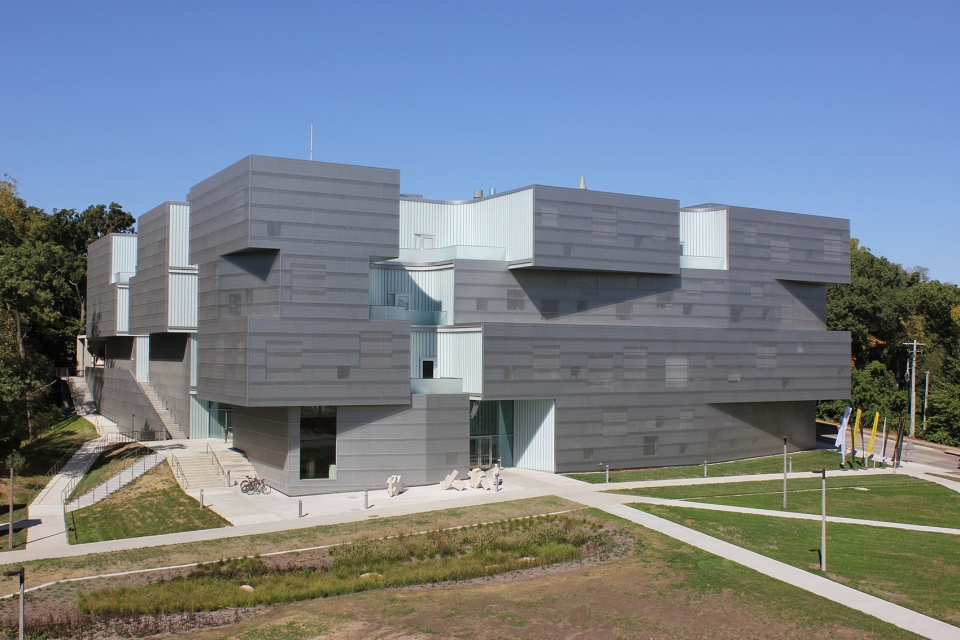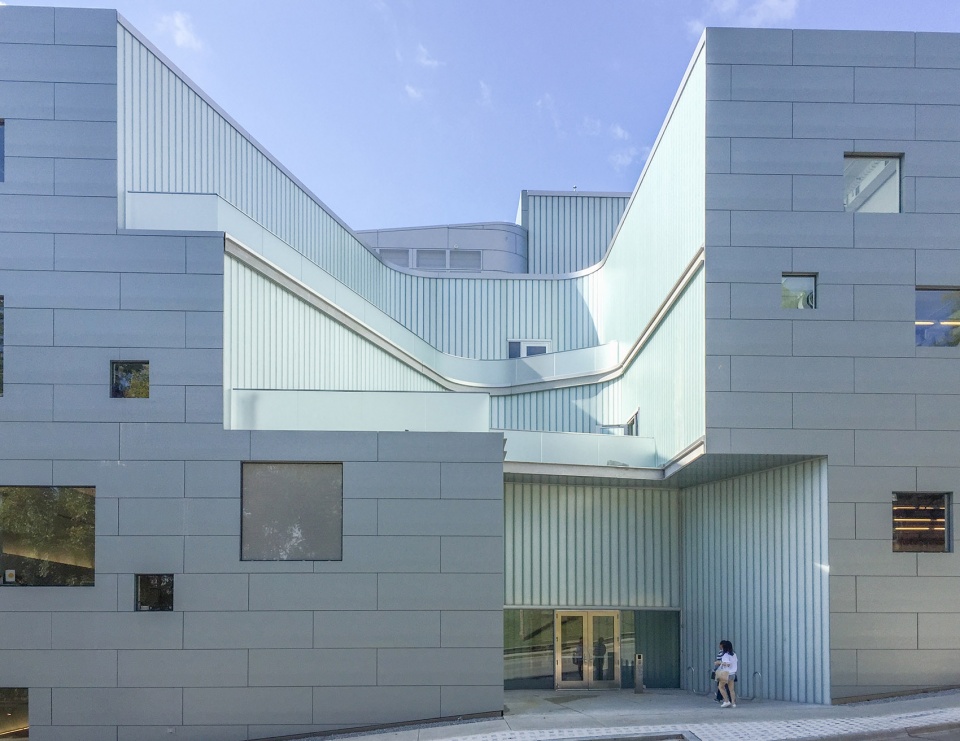The design concept of the Visual Arts Building at the University of Iowa, USA, centers on phenomenological experience, artistic utilization of natural light, and the creation of interdisciplinary collaborative spaces. Led by internationally renowned architect Steven Holl and his firm, the building integrates material innovation and sustainable technologies to forge of artistic creation that is both functional and spiritual. Below is an analysis of its design philosophy from four dimensions:
1. Spatial Perception from a Phenomenological Perspective
Deeply influenced by the phenomenological theory of philosopher Maurice Merleau-Ponty, Holl emphasizes that architecture should evoke people’s embodied experiences through space and materials. The building adopts a vertically porous structure, introducing natural light deep into the building through seven floor-to-floor “Light Centers” to form a dynamic sequence of light and shadow. For example, the curved glass curtain wall of the central atrium, combined with the spiral staircase, allows light to cast flowing shadows on the walls and floors as time changes, resembling a “sculpture of light” and enabling viewers to intuitively perceive the physical presence of natural light while moving.
Holl designed the building’s facade as a “breathing skin”: the south facade is covered with perforated stainless steel panels, which hide the windows during the day and filter sunlight through the holes, creating abstract light and shadow similar to a “blurred Mark Rothko painting”; at night, interior lights penetrate the panels, and the holes transform into luminous rectangles of varying sizes, turning the building into a “lighthouse of light” in the city. This alternating day-night visual effect transforms the building into a container of time and nature, strengthening the emotional connection between people and space.
2. Artistic Manipulation of Natural Light
Holl regards natural light as “the most important artistic medium”. The building achieves precise control of light through windows proportioned by the Fibonacci sequence, curved U profile glass curtain walls, and skylight systems:
Balance between direct daylighting and diffuse reflection: The studios use high-transmittance U profile glass with frosted interior treatment, ensuring sufficient natural light for artistic creation while avoiding glare.
Dynamic light and shadow theater: The double-layered skin formed by perforated stainless steel panels and outer zinc panels has holes sized and arranged through algorithm optimization, allowing sunlight to cast geometric patterns on the indoor floor that change with seasons and moments, providing artists with a “living source of inspiration”.
Reverse nighttime scenario: When night falls, interior lights of the building pass through the perforated panels and U profile glass in reverse, forming a “luminous art installation” that creates a dramatic contrast with the reserved appearance during the day.
This refined design of light turns the building into a laboratory of natural light, meeting the demanding requirements of artistic creation for light quality while transforming natural light into a core expression of architectural aesthetics.
3. Spatial Network for Interdisciplinary Collaboration
With the goal of vertical mobility and social cohesion, the building breaks down the physical barriers of traditional art departments:
Open floors and visual transparency: The four-story studios are laid out radially around the central atrium, with glass partitions at the edges of the floors, making various disciplinary creation scenes (such as pottery wheel throwing, metal forging, and digital modeling) visible to each other and stimulating cross-field inspiration collisions.
Social hub design: The spiral staircase is expanded into a “stoppable space” with steps 60 centimeters wide, serving both transportation and temporary discussion functions; the rooftop terrace and outdoor work area are connected by ramps to encourage informal communication.
Integration of the art production chain: From the ground-floor foundry workshop to the top-floor gallery, the building organizes spaces along the “creation-exhibition-education” flow, allowing students to directly transport their works from studios to exhibition areas, forming a closed-loop art ecosystem.
This design concept echoes the trend of “cross-border integration” in contemporary art and is praised for “transforming art education from isolated disciplinary islands into an interconnected knowledge network”.
Post time: Oct-29-2025
